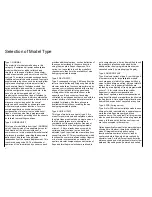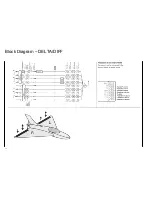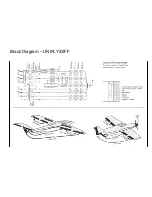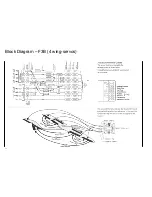
Selection of Model Type
6
Type 1: NORMAL
The majority of model aircraft belong in this
category. It comprises all power and sailplane
models with elevator, rudder, ailerons and
throttle (or in the case of gliders; the spoilers),
which are actuated by one servo for each of the
controls. The situation remains unchanged even
if additional control channels are used to actuate
supplementary functions, such as retracts, glider
tug release couplings, mixture adjust or flaps
(such as plain flaps) of sailplane models. Any
options available, and sensible, in conjunction
with this configuration are provided here. In the
case of a model equipped with a V -Tail
(replacing the conventional type of tailplane), a
special mixer may be used, which combines the
control functions of elevator and rudder in such a
manner as to provide each of the control
surfaces, each controlled by a separate servo,
with elevator plus rudder functions. For more
complex applications, such as automatic
compensation of elevator trim on actuation of
flaps, no less than nine freely programmable
mixers are available, permitting such functions to
be tailored to prevailing conditions.
Type 2: NORMAL/DIFF
This type of model differs from type 1 (NORMAL)
only by the provision of two separate servos for
the actuation of the ailerons instead of a
common servo. In this manner differential control
of ailerons is provided, permitting the downward
deflection of an aileron to be adjusted
independently of the upward displacement.. This
is achieved using code 22. The independent
operation of the two ailerons by one servo each
provides additional options, such as deflection of
these control surfaces in the same dire ction,
using them as plain flaps or flaperons. This
option, too, is available to suit the modeller’s
requirements, thanks to the availability of nine
freely programmable mixers.
Type 3: DELTA/DIFF
Type 3 corresponds to type 2, differing from the
latter in that in deltas and flying wing models the
elevator and aileron functions are performed by
common control surfaces located at the trailing
edges of the right and left wing panels and
moving either in the same direction or in the
opposite one. Each control s urface being
controlled by an independent servo, and with the
correct mixture of aileron and elevator control
provided for already. All other options are
available with restrictions, including the nine
freely programmable mixers.
Type 4: UNIFLY/DIFF
This type of model is a variant of type 2. It is
meant for power models and sailplanes, where
the plain flaps are actuated by a single servo, or
the full-span ailerons are to operate as a
combination of flaps and ailerons (flaperons).
For this application the fr eely programmable
mixers 1…5 have already been occupied by
certain special functions, just as if one had
adjusted type 2 to perform the mixer allocations
oneself via code 51. This mixer allocation, which
functions the combi-mix aileron-rudder, flaperon
mix, elevator compensation on actuation of
spoilers, elevator compensation on actuation of
flaps and throttle pre -selection are realised, is
not a compulsory one; it may be modified to suit
the modeller’s intentions, expanded by the
additional four freely pro grammable mixers or
cancelled entirely (re -creating type 2 again).
Type 5: QUADRO-FLAP
Type 5 is also a variant of type 2, just like type 4.
It is meant mainly for large sailplane models,
each wing panel of which is equipped with one
servo for each aileron and flap, giving a total of 4
servos. Here, too, the special functions are
realised by pre-adjusting of freely programmable
mixers 1…5 for combi -mix aileron-rudder,
flaperon mix, elevator compensation on
actuation of spoilers, elevator compensation on
actuation of flaps and mixing aileron function into
the flap function. Here again mixer allocation can
be modified, expanded or cancelled at any time.
Type 6: F3B (3 wing servos)
Type 6 is for F3B contest sailplane models, each
aileron of which is actuated by a separate servo,
while the plain flaps are operated by one
common servo. The universal Profi program can
also be used for models have two wing mounted
servos. In this case the functions not required
are left unoccupied in the receiver.
Options specifically meant for power models are
missing here. However, there are available all
kinds of imaginable mixing and coupling
functions between aileron, elevator, rudder,
spoilers and plain flaps, which are realised by
special mixers. For the different tasks, dura tion,
distance, speed and start, pertinent elevator trim
data and flap settings can be stored and called
Summary of Contents for mc-18
Page 1: ...1...
Page 10: ...Block Diagram NORMAL 10...
Page 11: ...Block Diagram NORMAL DIFF 11...
Page 12: ...Block Diagram DELTA DIFF 12...
Page 13: ...Block Diagram UNIFLY DIFF 13...
Page 14: ...Block Diagram Quadro Flap 14...
Page 15: ...Block Diagram F3B 3 wing servos 15...







































